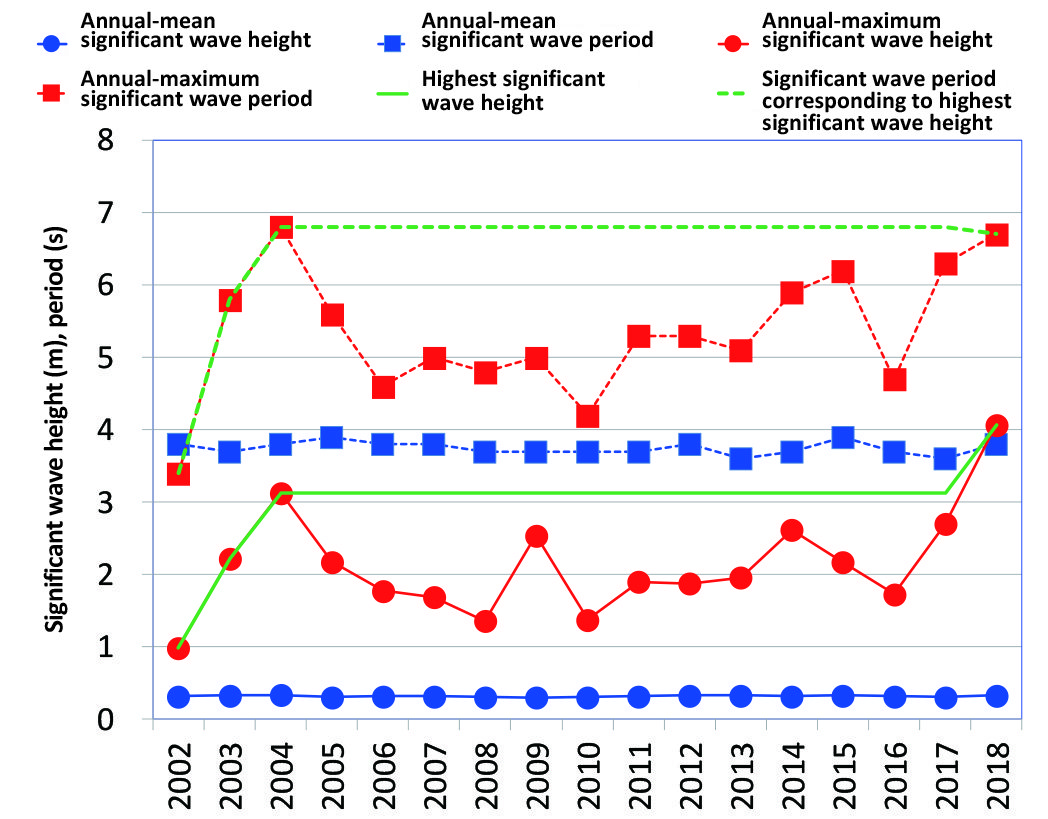Major Research Elucidation of oceanographic phenomena based on central processing and analysis of observation data
Since 1970, PARI has been constantly handling the routine work of centrally processing and analyzing the observation data obtained through the Nationwide Ocean Wave Information Network for Ports and Harbours (NOWPHAS). As the risk of climate change intensifies, it is crucial to continue performing the work well, and also to provide information that is closely related to works at ports, harbors, and coasts.
To achieve these objectives, we perform central processing and analysis of observed oceanographic data in this research. More specifically, we will provide quick and final analysis on wave data observed at each observation station, summarize the wave statistical analyses in the Annual Report on NOWPHAS, and also store the tidal level and wind data.
In FY 2019, we performed statistical analyses on the wave data obtained during 2018, and summarized the results in the Annual Report on NOWPHAS. During this year, the highest significant wave was updated at six observation stations; these are three coastal seabed wave gauges at Ise Bay, Shionomisaki, and Kobe as well as three GPS-mounted wave buoys off the coasts of Kaiyo in Tokushima, Cape Muroto in Kochi, and Hyuga in Miyazaki. Each of these locations set the new record because of the typhoons (Jebi and Trami) that made landfall in the Kinki region in September 2018.
We will continue with our work of producing the Annual Report on NOWPHAS, analyzing significant tsunami and wave events, and improving related data processing and analysis methods, in order to positively contribute to facility design and disaster prevention at ports, harbors, and coasts.

History of wave statistics at Ise Bay station of NOWPHA
(Highest significant wave height was updated for the first time in 14 years, since observations started in 2002)



